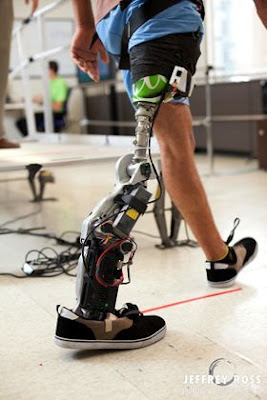Future Upcoming Technologies||Nano tecnology||Mind controling arms.
New latest Upcoming Technologies
Today We will know about future technology, How would be our future after the 100 years.
1.Nanotechnology
One of the best and upcoming technology in this world for medicals is "Nanotechnology". This technology will be used by scientists to improve the mental and physical powers of human beings.
In compare to today's world, the future people's will have more thinking powers and capabilities of work to do.
Nanotechnology in medicine involves applications of nanoparticles currently under development, as well as longer-range research that involves the use of manufactured nano-robots to make repairs at the cellular level. It will be so advance technology that diseases like cancer, heart disease, kidney disease, etc. will be fought so easily. It is estimated that it will even increase the living age of people from 70 to 100 years or maybe more.
Researchers at Worcester Polytechnic Institute are using antibodies attached to carbon nanotubes in chips to detect cancer cells in the bloodstream. The researchers believe this method could be used in simple lab tests that could provide early detection of cancer cells in the bloodstream.
A test for early detection of kidney damage is being developed. The method uses gold nanorods functionalized to attach to the type of protein generated by damaged kidneys. When protein accumulates on the nanorod the color of the nanorod shifts. The test is designed to be done quickly and inexpensively for early detection of a problem.
2. Artificial Leaves Generates Electricity
Using relatively and inexpensive material, Danial Gino Serra created the world first practical artificial leaf. The self-contained units mimic the process of photosynthesis and the end result is hydrogen, not oxygen. The hydrogen than can be captured into fuel cells and can be used as electricity even in the most remote locations on earth.
3.Mind-Controlled Robotic Arm
In 2012 the quadriplegic woman managed to move a robotic arm only using her thoughts to the level of proficiency that allows her to eat a chocolate bar with said arm. The University of Pittsburgh tea, behind the study, didn't stop there though by improving the technology in the arm and working more closely with the test subject Jan Scheuermann researchers have enabled her to replace the simper pitcher of the grip before with the four new hand shapes fingers spread pinch scoops and thumbs up that allows for more complicated object manipulation.
4. Fully Mind-controlled Leg
Connect it to its owner by two nerves and computer sensors, this bionic leg work in exactly the same manner as the human leg. With an error rate of just 1.8%, it's as close to a flawless mind-controlled limb as science has gotten yet created. By the Chicago Center for Bionic Medicine, the leg is the latest in the line of futuristic prosthetics. The only thought-controlled prosthetics available to amputees was bionic arms. But the new leg will soon be available to the more than one million Americans with leg amputations. It was developed by lead scientist Levi Hargrove at the Rehabilitation Institute of Chicago.
The legs movements are controlled by a person’s original nerves, which are redirected to a small area of the thigh muscle. When these redirected nerves instruct the muscles to contract, sensors on the amputee’s leg detect tiny electrical signals from the muscles. These signals are then analyzed by a specially-designed computer program which instantaneously decodes the type of movement the patient is trying to perform (like moving the knee or ankle). It then sends these commands to the robotic leg.
5. Artificial Bionic Eyes
Bionic eye scientists have one common goal: to develop technology that's as effective for visual disabilities as cochlear implants have become for auditory ones. But different scientists' methods for achieving this vary. What's more, bionic eye technology is still in its infancy compared with cochlear implants for hearing loss.
Several bionic eye implants are in development, but currently only one is available in the United States, and it is suitable only for blindness caused by specific eye diseases. However, as research continues, more and more people may soon benefit from high-tech bionic eyes.
||| THANKS FOR READING HOPE IT WAS HELPFULL |||


















Leave a Comment